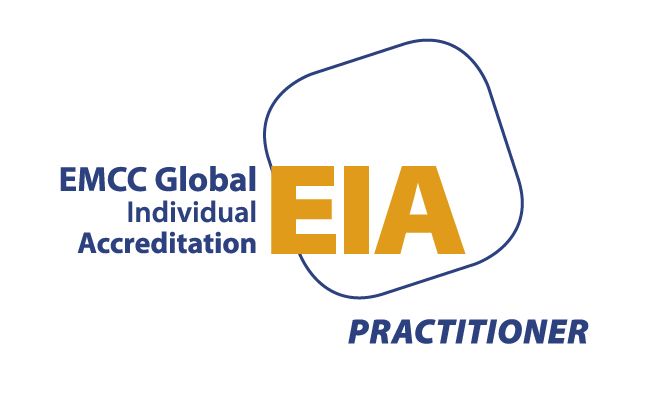
Blog Layout
Crisis Management or Calm Control
Barbra Carlisle • March 5, 2025
Lead with impact: Are you focused on what really matters?

You know you are in the right place, and that you want to make a different, not just to the bottom line, but to the people you work with and the communities you serve.
But let’s pause for a moment.
Are you leading with impact, or are you bogged down in the day-to-day?
The guardian in you might be keeping the organisation steady, ensuring governance, compliance, and financial sustainability. Meanwhile your creative side sees a future full of possibilities, new initiatives, and big, bold change and your connector instinct wants to build partnerships and rally support. Another part of you, the Nurturer within you wants to ensure your people feel supported and valued. And then there’s the Pioneer—the strategist, driving forward with vision and courage.
But here’s the challenge: when everything feels urgent, it’s easy to lose sight of what’s most important.
The Risk of Getting Stuck in the Weeds
Meetings. Emails. Stakeholder demands. The never-ending to-do list. It all feels necessary—because it is—but is it truly moving the needle?
Research backs this up: A study by the Bridgespan Group found that non-profit CEOs spend up to 60% of their time on internal operations—meetings, problem-solving, and crisis management—leaving little time for strategy, innovation, and external engagement. Yet, high-impact leaders intentionally shift 25–30% of their time toward long-term priorities, such as fundraising, strategic partnerships, and leadership development.
For many leaders, the reality is this:
The guardian in us gets caught ensuring policies and processes are perfect but struggle to carve out time for forward-thinking strategy. (A Harvard Business Review study found that leaders who focus too much on risk aversion often miss innovation opportunities that drive real progress.)
The creative in us has a hundred visionary ideas but then we find ourselves bogged down in operational constraints.
Those of us with a strong connector tendency spend time nurturing relationships but may neglect structured long-term planning. (Data from Stanford Social Innovation Review suggests that nonprofit partnerships are most successful when backed by clear, measurable objectives.)
Our nurturer tendencies sees us pouring energy into people and culture but hesitating to make hard, strategic decisions. (A survey by Nonprofit Quarterly found that 43% of nonprofit leaders struggle to address underperformance in their teams due to a strong people-first mindset.)
And on top of all this the pioneer tendency within us may push for progress but forget to bring the team along in a way that ensures sustainable impact.
Step Back. Get Clear. Lead with Purpose.
So, how do you step out of the whirlwind of daily demands and refocus on what truly matters?
1. Make Reflection Non-Negotiable
You can’t lead effectively if you don’t give yourself time to think. Schedule it. Protect it. Prioritise it.
Ideas….
• Start each month with a 90-minute clarity session. Review what’s working, what’s not, and what needs to change.
• Use weekly “thinking time.” Even 30 minutes to zoom out can reset your priorities.
• Ask yourself: Am I leading the organisation forward, or just keeping it running?
A study by Bain & Company found that the most effective leaders schedule at least 10% of their time for strategic reflection—leading to better decision-making and higher performance.
2. Define Your “Big Three” Priorities
Not everything on your to-do list is equally important. Identify the three most critical priorities that will create the biggest impact over the next year.
Useful questions to ask yourself:
• What will make the greatest difference to my mission?
• What will set the organisation up for long-term success?
• What’s something only I can lead or influence?
Then, structure your time accordingly. If your calendar doesn’t reflect these priorities, something needs to change.
Research from McKinsey shows that leaders who focus on 3–5 strategic priorities (rather than juggling everything) deliver stronger, more sustainable results.
3. Audit Your Time—Relentlessly
Look at your schedule for the last two weeks. How much time was spent on:
✅ Strategic thinking?
✅ High-value relationships?
✅ Developing leaders in your team?
❌ Unnecessary meetings?
❌ Firefighting problems that others could handle?
If most of your time is spent on reacting rather than leading, it’s time to delegate and reset your focus.
The Chronicle of Philanthropy found that non-profit CEOs who proactively manage their schedules for strategic work see a 40% increase in organisational effectiveness.
4. Empower Your Team—Let Go to Lead More
Your role is not to do everything. It’s to create the conditions where others can step up.
• Delegate with trust. If you’re still signing off on minor decisions, ask yourself why.
• Develop leaders, not just employees. Give your senior team more ownership.
• Ensure clear decision-making frameworks. Everyone should know what they’re responsible for.
A Deloitte study found that organisations with high delegation and trust see 33% higher performance and retention rates in senior teams.
5. Lead with Your Strengths—But beware of how you show up influences and affects others
Every leader has a dominant leadership voice, but great leadership happens when all perspectives are considered.
If you’re are an ideas and big picture thinker ensure there’s someone balancing big ideas with practical execution.
If you’re a not big on risk taking or you worry about what people think, don’t let risk management or team bonding hold back necessary bold decisions.
If you’re someone who values connections, make sure relationships don’t overshadow clear, measurable impact.
Diverse leadership voices lead to better decision-making and more resilient organisations.
And finally remember that teams with a balance of strategic thinkers, relational leaders, and operational experts achieve higher long-term success rates. You don’t and you shouldn’t be doing everything. Focus on your priorities and let others flourish alongside you.
Share
Tweet
Share
Mail

By Barbra Carlisle
•
March 16, 2025
As a leader I am sure you will agree that leadership is a rewarding journey on the whole. However, it’s often a journey that is travelled under significant pressure. The weight of responsibility, decision-making, and managing people can lead to stress that doesn't just impact you but ripples out to your team, organisation, and your family life. Recognising, understanding, and managing this stress is crucial for sustaining effective leadership and fostering healthy workplace cultures. The Dynamics of Stress in Leadership Stress manifests differently for every leader. For some, it may show up as physical symptoms like fatigue, headaches, or difficulty sleeping. For others, it's emotional or behavioural—irritability, indecisiveness, or withdrawal. Prolonged stress can lead to burnout, reduced productivity, and poor decision-making (Harvard Business Review, 2022). Stress isn’t always about workload. It can stem from unclear expectations, navigating complex team dynamics, or facing the weight of constant change. The challenge is that leaders often feel they must carry this weight silently, believing vulnerability undermines authority. Yet, the reality is that unaddressed stress can lead to miscommunication, disengagement, and a culture where pressure becomes the norm rather than the exception. The Ripple Effect of Leadership Stress Individual Impact: Chronic stress can erode a leader’s health, relationships, and overall wellbeing. It can lead to poor mental health outcomes and diminish one’s sense of purpose and satisfaction in work. Family Impact: The stress a leader experiences doesn't stay at the office. It can strain relationships at home, reduce emotional availability, and contribute to feelings of guilt and isolation. Team Impact: Leaders set the tone for their teams. Stress can result in less empathetic leadership, strained communication, and a lack of psychological safety. This may discourage innovation and increase turnover. Organisational Impact: Persistent stress in leadership can contribute to a toxic culture, poor performance, and higher absenteeism rates. It affects organisational resilience and long-term sustainability (CIPD, 2025). Recognising Stress Managing stress starts with awareness. Leaders need to recognise not just when they are under pressure but how it manifests. Reflection is key, as is understanding the unique triggers and patterns that heighten stress levels. Here, subtle insights from personality frameworks like the 5 Voices can offer valuable guidance. Each leadership style may respond to stress differently. For instance: • Leaders who prioritise harmony may feel overwhelmed when facing unresolved conflict. • Leaders who value precision and excellence might experience stress when faced with ambiguity or rushed decisions. • Vision-oriented leaders could feel trapped if they're bogged down in details. • Process-driven individuals might struggle when systems break down or when rapid change disrupts routines. • Empathetic, people-focused leaders may carry the emotional weight of their team's wellbeing. Understanding these tendencies can help leaders pinpoint when stress is rising and why. It also highlights that there's no one-size-fits-all solution. Managing stress is about recognising what matters most to you and ensuring those needs are met sustainably. Strategies for Managing Stress Pause and Reflect: Take time to identify stress triggers and patterns. Journaling or quiet reflection can help in recognising emotional signals early. Connect with Peers: Leadership can be lonely. Building networks where honest conversations are welcomed can provide perspective and reduce isolation. Embrace Healthy Boundaries: Knowing when to switch off is vital. Leaders who model balance encourage the same for their teams. Reframe Pressure: Sometimes, changing the narrative around challenges can reduce their emotional weight. This doesn't ignore reality but reshapes how it's perceived. Coaching Support: Engaging with a coach offers a safe space to explore challenges, build resilience, and develop strategies for maintaining balance. Coaching can provide insights into stress responses and practical ways to manage them without compromising leadership effectiveness. To summarise Stress is an inevitable part of leadership, but it doesn't have to define it. By recognising how stress manifests, understanding personal triggers, and implementing practical strategies, leaders can sustain their wellbeing and lead with clarity and purpose. To help understand what your triggers are why not take our free 5 Voices assessment here Investing in personal development and seeking coaching support is not a sign of weakness but a commitment to sustainable leadership. It ensures that the leader, their team, and the wider organisation thrive—not in spite of challenges but through navigating them with resilience and authenticity. Book a call with me here to talk through what you are experiencing and what you would like to achieve. Harvard Business Review. (2022). Managing Stress as a Leader. CIPD. (2025). https://www.cipd.org/uk/knowledge/factsheets/stress-factsheet/ Giant Worldwide. (n.d.). The 5 Voices Framework.

By Barbra Carlisle
•
March 16, 2025
In leadership it’s easy to believe that success comes from having a plan and going for it perhaps with big, bold moves. But the reality? Curve balls. Progress is almost always built step by step. And that’s not just okay—it’s powerful. Let’s be tenacious! Leader’s who succeed are tenacious, they show determination and persistence in pursuing goals despite challenges and setbacks. Tenacity encompasses: - Resilience : Bouncing back from failures and continuing to push forward. - Commitment : Staying dedicated to the vision and objectives, even when progress is slow. - Problem-Solving: Continuously seeking solutions and not giving up when faced with obstacles. - Inspiration : Motivating and encouraging the team to stay focused and driven, no matter the difficulties. Tenacious leaders are often seen as role models who inspire others to persevere and achieve success. Tenacious leaders take one step at a time. The Small Step Advantage Why do small steps matter so much? Because they build momentum. Every small, intentional action creates a sense of progress, which fuels motivation and confidence over time. Recognizing small wins can significantly boost motivation and performance (HBR, 2011). Regardless of your leadership style, borne from your personality preferences, small steps help achieve goals. For leaders who value stability, small and steady progress provides a reliable foundation for sustainable growth. For those who dream big, small steps turn ambitious visions into achievable milestones. And for leaders focused on relationships, each small moment of connection strengthens trust and fosters deeper engagement. Meanwhile, those who thrive on supporting others can find meaning in everyday actions that nurture growth, while leaders driving towards bold goals benefit from breaking ambitions into clear, actionable steps that maintain momentum (McKinsey, 2022). How to Lead with Tenacity, One Step at a Time 1. Define What Progress Looks Like: Start by getting clear on what small progress means for you and your team. It might be setting weekly goals, holding reflective check-ins, or focusing on one key priority each day. 2. Celebrate Consistent Wins: Don’t underestimate the power of acknowledging small achievements. Recognition of progress—no matter how small—builds momentum and motivation within teams. 3. Embrace Uncertainty: You won’t always know the next step, and that’s okay. Tenacity means trusting the process, learning as you go, and leaning into uncertainty with curiosity, not fear. 4. Seek Support: No leader thrives in isolation. Connect with peers, mentors, or a coach to reflect on your progress and challenges. Feedback and perspective can be the catalyst for confident next steps. 5. Reflect and Refine Take time each week to reflect. What’s working? What needs adjusting? Reflection isn’t a luxury; it’s a leadership necessity for long-term resilience. The Real Secret to Sustainable Leadership Success isn’t about speed or perfection. It’s about showing up, step by step, and staying committed to the journey. The leaders who thrive are those who understand that persistence isn’t about relentless hustle—it’s about consistent, thoughtful progress. So, if you’re feeling overwhelmed or uncertain, remember this: small steps lead to big change. And that’s more than enough. Go to The Unlikely Executive Podcast Episode 5 where I explore the power of tenacity in leadership with CEO and Founder of StrokeInformation Nick Clarke. If you’re looking to build resilience and lead with clarity, this episode is for you. Take a step now Come and join me on 5 Voices for Teams programme where we cover tenacity, resilience, leadership and team performance. You get a chance to celebrate your approach to tenacity while understanding other perspectives, leading to enhanced performance for everyone. I support leaders in non-profit organisations and those passionate about Leadership for Good. My mission is to help leaders recognise their brilliance—and that of their teams—so growth is sustained and accelerated.

Subscribe to be the first to hear about our latest news and events
Join the Newsletter
You're in! Thanks for signing up.
Oops, there was an error sending your message.
Please try again later

Copyright 2022 GLEE COACHING CONSULTANCY. Site design by fireflydigital.co.uk
